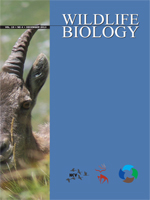The Japanese rock ptarmigan Lagopus muta japonica breeds only in limited alpine areas at high elevations (> 2,500 m a.s.l.) in Japan. The estimated population size is about 2,000 birds and their breeding distribution is subdivided into several local areas, in each of which they may be at risk of local extinction. We estimated age-specific demographic parameters of the core population breeding on Mt. Norikura in Gifu and Nagano prefecture in Japan. We also estimated population viability using deterministic and stochastic population models. Age-specific fertility (the number of female offspring that survived to the next breeding season per female) was 0.417 ± 0.086, 0.490 ± 0.080, 0.513 ± 0.153, 0.435 ± 0.078, 0.562 ± 0.139, 0.580 ± 0.122 (mean ± SE) for ages 1-6 , respectively. The annual survival rate was 0.739 ± 0.047, 0.624 ± 0.064, 0.513 ± 0.087, 0.732 ± 0.151, 0.447 ± 0.220, 0.486 ± 0.089. The population growth rate, evaluated by use of a deterministic projection-matrix model, predicted a stable population, λ = 1.105 ± 0.063, 95% CI = 0.985-1.231 and λ = 1.114 ± 0.062, 0.996-1.239, using two different assumptions for the final age of reproduction by ptarmigan. We evaluated the risk of extinction as the proportion of λs that was < 1, and this was ≤ 4.4%. To complement the deterministic model, we developed an individual-based stochastic population model in which each of the individuals produced a variable number of offspring and survived one year with certain probabilities that were drawn from estimated distributions of age-specific clutch size and survival rates. Averaged population growth rate under the stochastic model was λ = 1.1, and the risk of extinction defined as the proportion of trials in which population size ≤ 1 within 30 years was ≤ 8.9%, even when the starting population was small (15 birds). These results suggest that the local population at Mt. Norikura is stable in size and suffers a relatively low risk of extinction. We suggest that this population can serve as a potential source for surrounding small local populations that may be sink populations.
How to translate text using browser tools
1 December 2013
Population viability analysis of the Japanese rock ptarmigan Lagopus muta japonica in Japan
Ayaka Suzuki,
Atsushi Kobayashi,
Hiroshi Nakamura,
Fugo Takasu

Wildlife Biology
Vol. 19 • No. 4
December 2013
Vol. 19 • No. 4
December 2013
individual-based model
Lagopus mutus japonica
matrix projection model
population viability analysis
risk of extinction
rock ptarmigan




